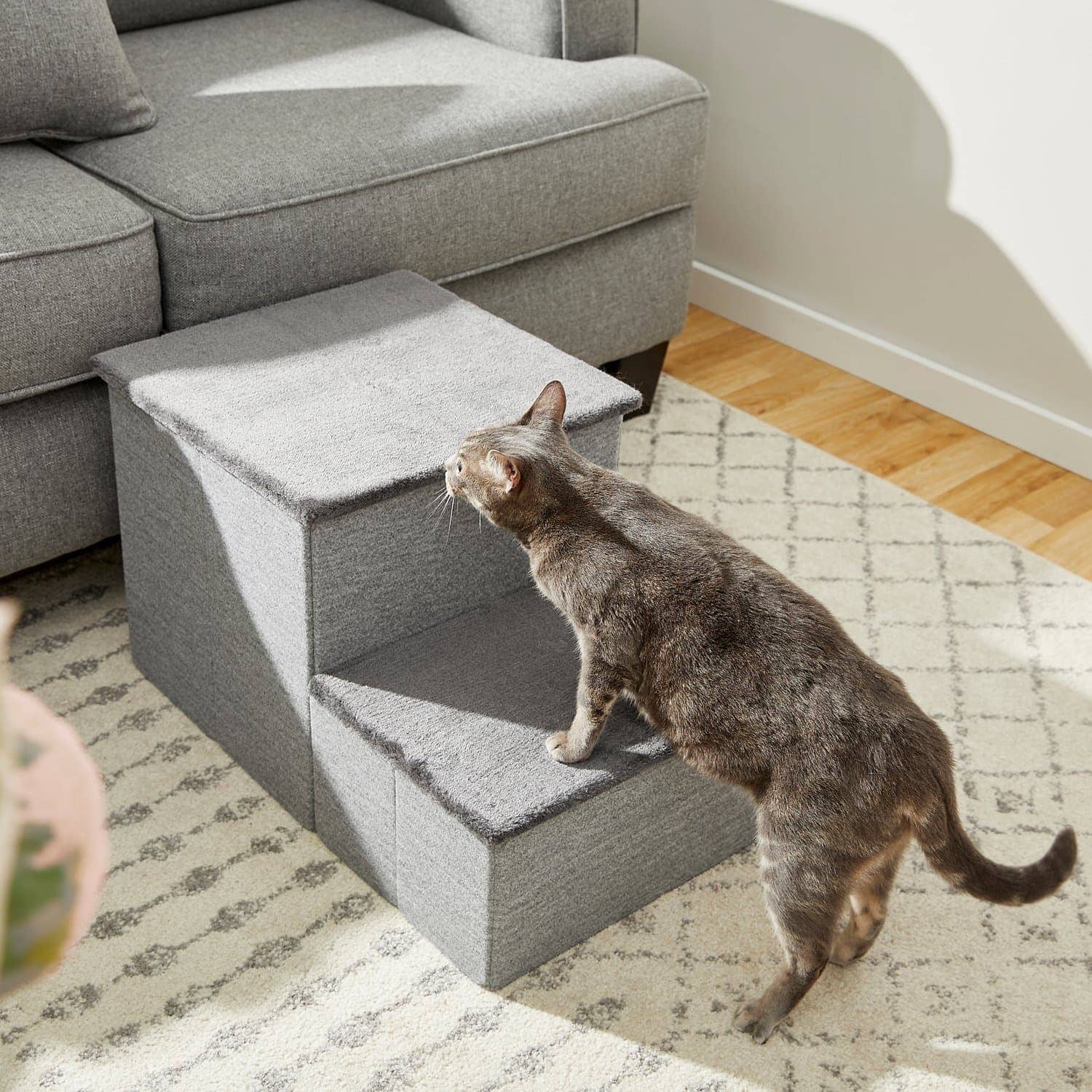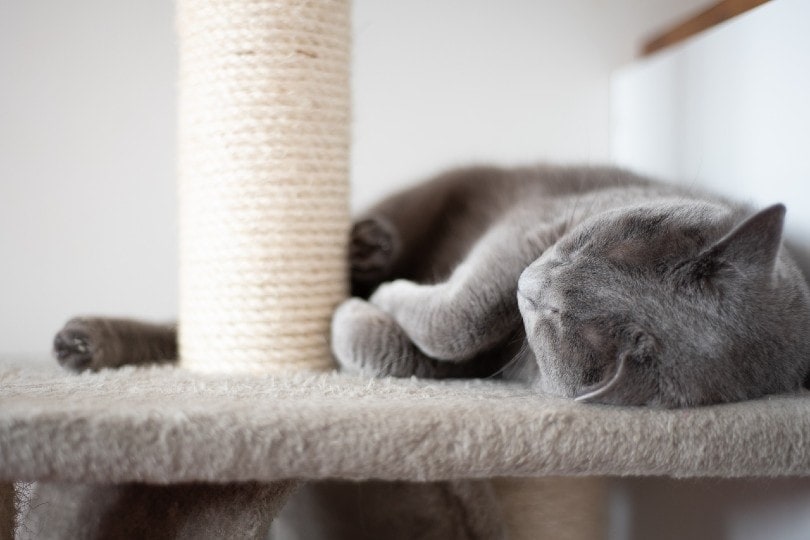Do Cats Like Being Picked Up? Correct Way, Tips, Facts & FAQ
Updated on
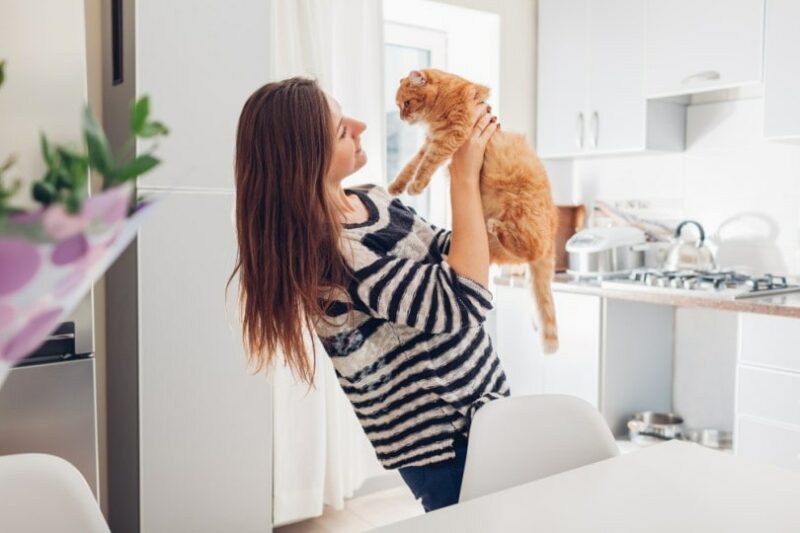
Click to Skip Ahead
Not all of us have cats that enjoy being picked up. But some cats beg their owners to be picked up for a loving cuddle. What’s going on here? Why do some cats seem to enjoy it and others don’t?
The only answer to this is that it depends on the individual cat’s personality and background. Some cats seem to enjoy being held, while others loathe it.
Here, we take an in-depth look into the reasons that cats might not like being picked up and discuss the best way to go about doing so.
Top 8 Reasons That Cats Don’t Want to Be Picked Up
We know cats can be undeniably adorable and quirky, but can they really be so different from each other? There are a few reasons that some cats don’t appear to enjoy the experience of being picked up.
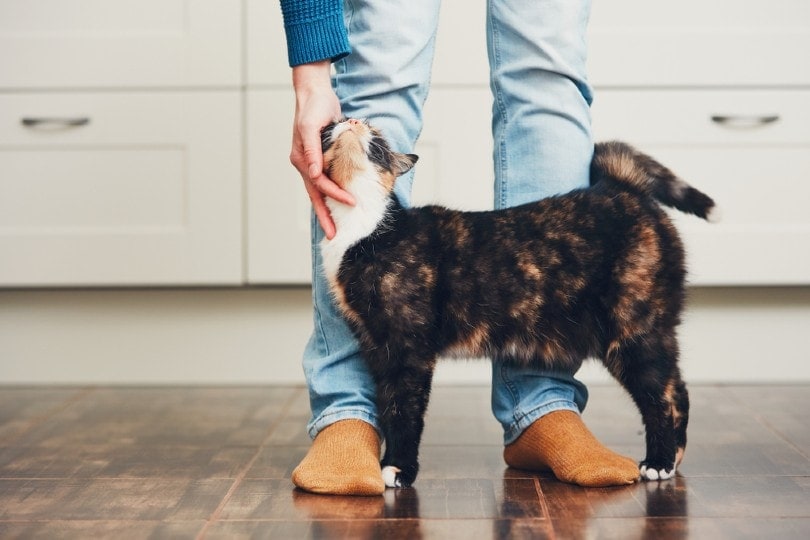
1. Socialization Issues
This is one of the main reasons that some cats don’t like to be picked up. All kittens need to be socialized appropriately. Being introduced to humans, particularly being handled by people, is essential in the development of a kitten.
With the right kind of socialization, most cats will grow to be well-behaved (as much as they can be), affectionate, and trusting. A cat can become distrustful, shy, scared, and even aggressive without suitable socialization. These cats are much less likely to enjoy being picked up and held.
2. Disrespectful
All felines ask for our respect — even if they don’t always respect us and our belongings! Many cats can be quite independent, and by picking them up, you’re taking away some of that independence and control.

3. Restraint
While a good cuddle can be nice, some cats will feel as though they are being restrained, which most animals — and many people — don’t enjoy. It’s a loss of control and the cat may feel trapped.
This is particularly true for cats that weren’t socialized well or that were strays for a while.
4. Trauma
Sometimes, trauma from a bad experience can impact cats and how they feel about being picked up. Some cats may start to associate being picked up and restrained with a negative experience.
If you’ve adopted a rescue cat, it’s difficult to know what they went through before you brought them home. Something might have occurred that has brought on bad associations with being held.
But there are also other, less worrisome associations, such as trips to the vet or the groomer. These necessary visits can be relatively traumatic for many cats because they must be restrained.
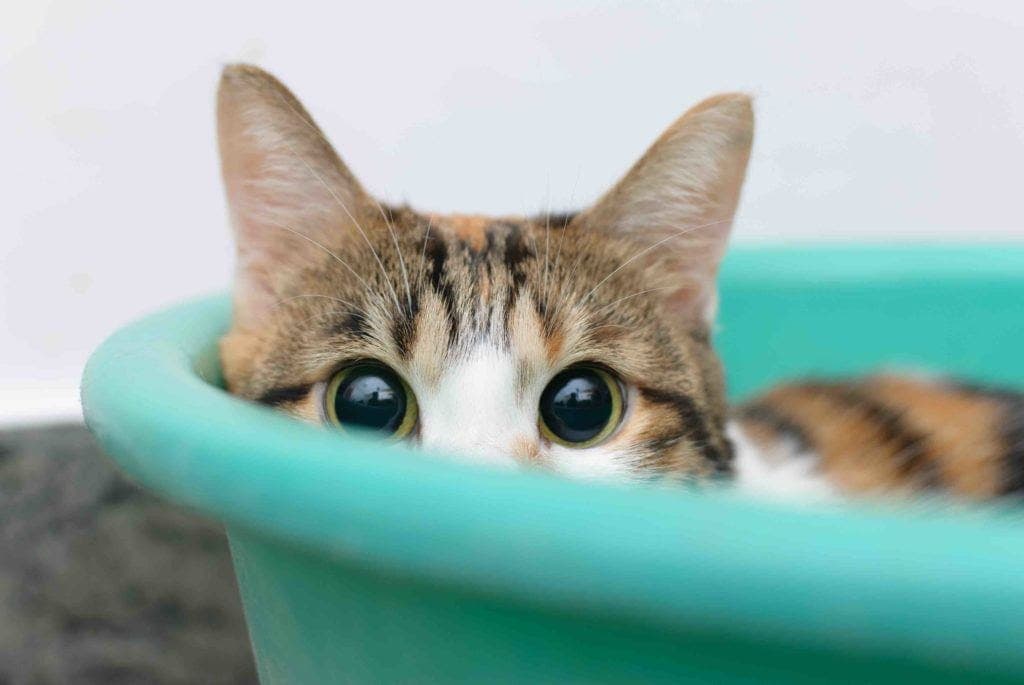
5. Pain or Illness
If your cat usually doesn’t mind being picked up or held but suddenly rejects it, they might be sick or in pain. Animals hide illness and pain until it’s become bad enough that they can’t disguise it any longer.
It might not be a serious problem unless your cat shows other symptoms, such as loss of appetite, lethargy, weight change (gain or loss), lack of grooming, and excessive vocalizations. But if there’s any doubt, speak to your vet.
6. Scaredy Cat
If your cat tends to be on the skittish side, being picked up might be a scary event. Cats that are easily spooked by loud noises or sudden movements might simply be afraid of being picked up.
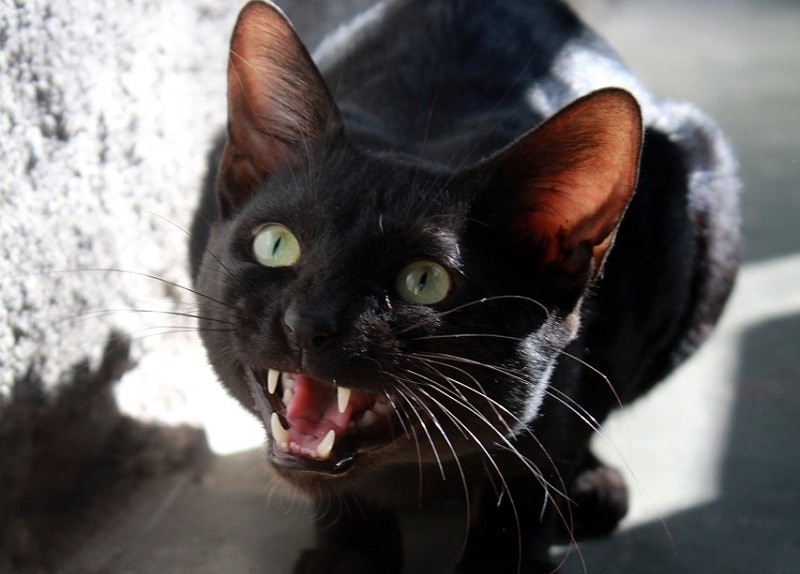
7. Just Not Natural
When you watch cats interact with each other with affection, you’ve probably noticed that they don’t pick each other up. The only time that you see a cat pick up another is when a mother cat picks up her kittens by the scruff of their necks. But she does this to move them, particularly if they’re in danger.
For some adult cats, the sensation of being picked up may feel like being picked up by a predator. So, no matter how loving your intentions are, your cat may only see it as unnatural and scary.
8. Individual Cats
Finally, some cats just don’t like being picked up and held. All cats have their own quirky and unique personalities, and while some cats actually want to be picked up, others dislike it. Some cats are just more aloof and reserved by nature and only willing to instigate snuggles on their own terms.
They probably enjoy your attention and love, just in a way that suits them best, like sleeping next to you on the couch or coming to you for chin scratches.
How to Hold a Cat
There is a right way and a wrong way to pick up a cat. Sometimes, you have no choice but to hold your cat. But don’t force it if it isn’t necessary. You need to respect your cat’s preferences, particularly if being held is something that makes them uncomfortable, angry, or stressed.
The longer that you try to hold a cat that’s clearly unhappy and struggling, the harder it’s going to be to hold them when it’s a necessity.
Start Slow
If your cat doesn’t have any issues with being touched, you don’t have to follow this approach.
You need to approach your cat slowly and carefully — you don’t want to startle them. Try placing your hands softly on your cat’s sides, applying gentle pressure, and then letting go. Follow this with praise and a special treat. If you keep using this approach, your cat might start to look forward to these sessions.
Once your cat seems more comfortable with this process, you can slowly start to build up to picking up your cat. Be slow and gentle, and release your cat as soon as there are any signs of discomfort. Even better is to put your cat down before the struggling begins.
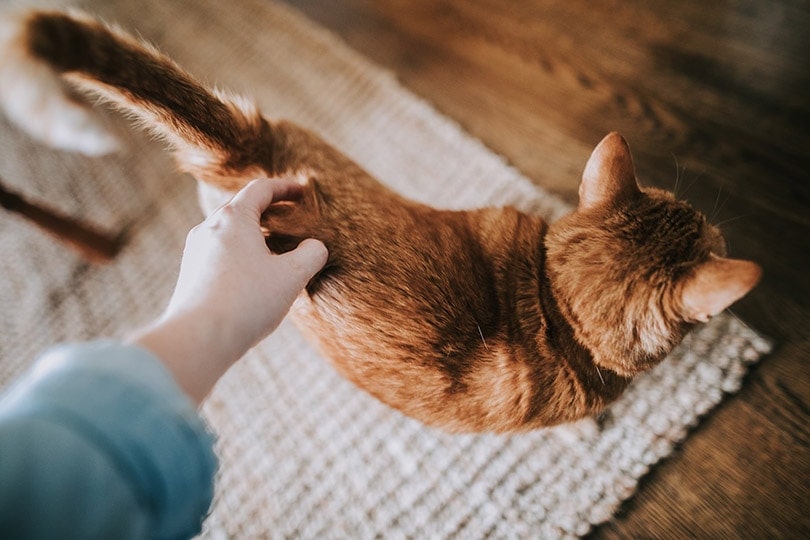
Holding Your Cat
The most essential thing is that your cat needs to feel secure while in your arms. Always pick a cat up with two hands, even if they’re small. Do everything slowly and gently. Never scoop your cat up quickly and without warning unless it’s to get them out of a dangerous situation.
Under normal circumstances, use one hand to cradle your cat’s back end and place your other hand along their chest. Then, allow your cat to put their paws on your arm (or wherever they want, like your shoulder).
However, if you need to hold your cat due to safety issues, you’ll want to cradle your cat’s back end with one hand and secure the back legs with the fingers of that hand. Then, place your other hand along the chest, and use your fingers to secure the front legs. Only use this method if your cat needs to be secure and moved to a safe environment as quickly as possible.
What Not to Do
Now that you know the right ways to pick up and hold a cat, there are a few things that you shouldn’t do, particularly if you want your cat to trust you and be able to handle the occasions when they have to be picked up.
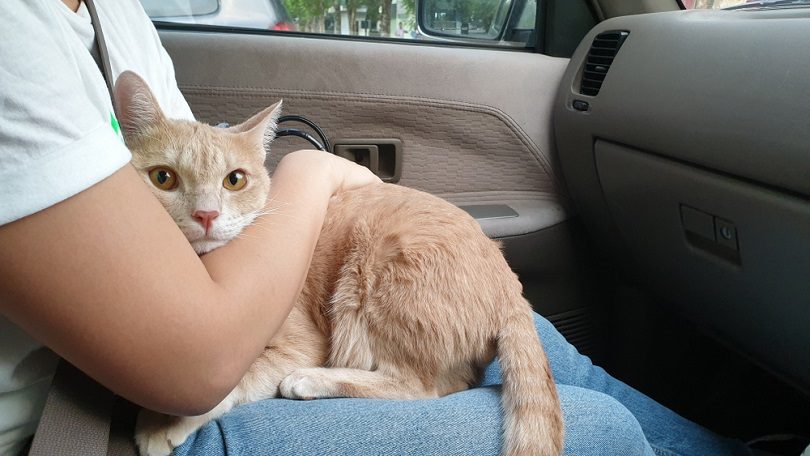
Putting Your Cat Down
First, when it’s time to put your cat down, do it slowly and gently. Don’t drop your cat suddenly or let them jump from your arms. Instead, place your cat on the floor, a cat tree, or another surface.
No Cradling
Also, don’t pick up your cat and hold them like a baby — in other words, on their back. Some cats might be okay with this position, but most dislike it.
Remember, most animals feel vulnerable when exposing their bellies. When they do, they are literally showing that they trust you. However, they should only do this on their own terms, as cradling your cat in this manner takes their control away.
It also brings all your cat’s claws closer to your face, which is not a great idea, particularly if your cat is angry or stressed.
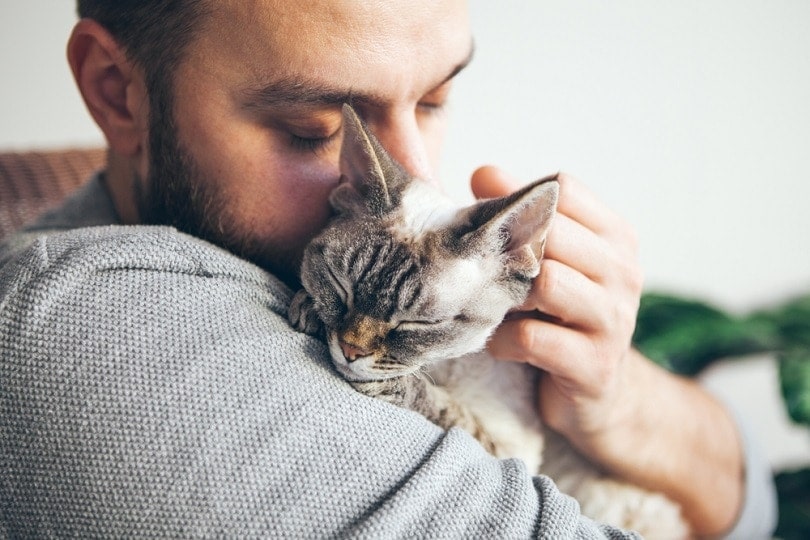
No Scruffing
Experts are against scruffing cats due to it potentially causing stress and discomfort to the cat. When scruffing a highly stressed cat, you’ll only be adding to that stress and potentially causing fear and even panic in your cat, which could lead to aggression.
While there might be times when scruffing is the only alternative, it should be a last resort and never a method used regularly.
Final Thoughts
You should only pick up your cat if they seem receptive to it. Make a point of teaching your children that they shouldn’t chase and carry your cat until they are old enough to do it properly.
Try putting yourself in your cat’s position to better understand why it isn’t fair to force your cat to do things that they aren’t comfortable doing. That said, with time and patience, your cat may eventually enjoy being picked up and held.
See Also:



